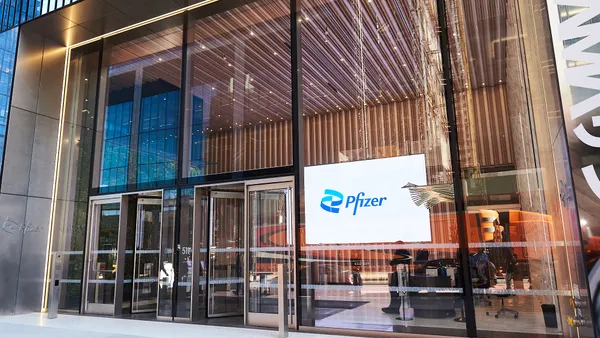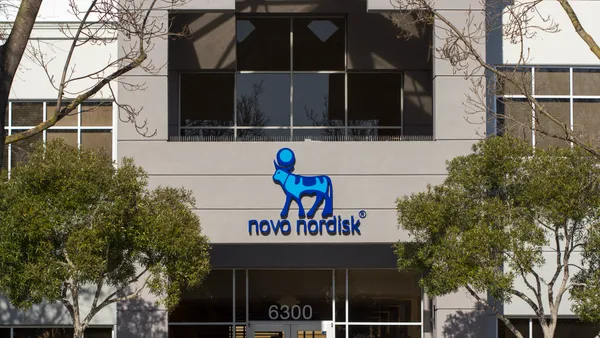For what seems like years, I have been attending continuing medical education (CME) meeting after CME meeting, reading article after article, listening to everyone qualified to have an opinion sharing his or her view. The topics and themes have remained the same. Quality improvement (QI) or performance improvement (PI) were the foundation; the theme was that everyone needed to adopt QI or PI. Recently, I attended a national meeting where key figureheads presented slides highlighting what QI meant to them and how implementation was essentially a “nobrainer.” My colleagues in attendance represented medical societies, hospitals, and medical education companies. They all turned to each other and whispered sidebar conversations that created an audible buzz in the room. DEJAVU, AGAIN Once more, the topics and themes were the same, as were the responses. “How are we supposed to do that?” “Do they have any idea what they are asking of us?” “Nobody outside of a major academic institution will ever be able to do this!” Years ago, I would have probably been engaging in the same discussion, but no longer. This year, I realized these figureheads are correct in their assessment that QI or PI might just be the saving grace for accredited medical education. I am not alone in this realization and I know acceptance does not equate to implementation, but I believe that QI can and should be at the foundation of any accredited program. The ACCME Essential Areas and Elements and the 2006 Updated DecisionMaking Criteria Relevant to Essential Areas and Elements remind me of a Dan Brown novel, but without the interesting cast of characters. Starting in Essential Area 1: Purpose and Mission ranging through Essential Area 3: Administration, the document crafters have laid a foundation for providers to follow in perhaps the most basic, simplistic fashion humanly possible. The definition of these areas and ele ments, however, are similar to the U.S. Constitution and are open for interpretation. Looking further along the document we come across the 22 criteria that have caused sleepless nights for many in our field. If I only had a dollar for every time some one has asked me for my take on what they mean, whether they will work, and how to implement them all. FACINGTHE INDUSTRY’S FEARS I’m not sure I’ve ever seen so much fear created by a nonlegal document in all of my professional years. The concern is high lighted when the topic of discussion moves to criteria 1622, also known as the Accreditation with Commendation section or “the big seven.” These seven components seem to fall into the Contributed by Rick Kennison,DPM,MBA realm of concept and theory rather than into the educational or business plans of most providers. Achieving these criteria appears to be the Holy Grail for accredited providers as they pre pare for reaccreditation or 2010, whichever comes first. For CME to regain its position as a valuable commodity in education, CME providers need to step up to the plate and determine if, and how, they can produce programming that achieves most, if not all, of the big seven. These are not inde pendent processes. They are the moving parts of a bigger pic ture of quality improvement. I’ve been in CME long enough to realize Webconferences and monographs don’t impact the qual ity of care, regardless of how many postevent surveys are sent out. I also don’t see the value that CME dinner meetings and symposia bring to changing physician behavior. For CME to survive, change needs to be universal. Individuals with decisionmaking authority within medical education companies need to commit to making the changes necessary to achieve reform. My position has allowed me to determine what impact the updated criteria might have on my business and the larger business of CME. Like other providers, I initially found the spe cific verbiage to be vague even though the messages relayed were complex and Herculean in scope. But I decided the circuit speakers and the rest of the usual suspects had discovered some thing we needed to explore to secure a place in the future. TAKINGALONG,HARDLOOKATPROCESSES The early discovery phase of having QI as a product offering was long, but not labor intensive. We interviewed members of many industries outside of direct healthcare and CME as a first step. This was possibly the single most important action we took along the decisionmaking path. We realized the truest educational need wasn’t being addressed through what we call “traditional CME programming.” Traditional CME program ming consists of anything that is a onetime touch with a healthcare provider. For years we have heard concerns over the effectiveness of CME and its placement within valuable education. Physician time always has been a commodity. Between patients, admin istrative tasks, and the multiple other hats they wear, physi cians must select nonpracticerelated activities carefully. Recent maintenance of certification (MoC) requirements and topdown performance improvement and payforperformance measures appear to many physicians to be an additional strain on a demanding workload. Eventually, as QI processes and other demands work together in the same arena rather than in a mutually exclusive fashion, physicians may have a reformation of their perception regarding time demands. All of these com ponents can be implemented under the same umbrella and CME is in a perfect position to join in this partnership. RICK KENNISON STEPPING UP TO THE PLATE CONTINUING EDUCATION F 48 F e b r u a r y 2008 PharmaVOICE 0208issue FINAL 1/18/08 5:36 PM Page 48 PHARMA outlet CME:THERIGHT FIT FORALL SIZES Over the past 10 years, nonprofit and profitbased organiza tions have sprouted up in the QI arena. Many of these compa nies provide value to those who use their services and products. But many of the services offered by these QI organizations were not always feasible to those not associated with large healthcare systems, academic institutions, or to members of indirect healthcare industries. Smaller practices, independent or small hospitals and healthcare systems, and entities with smaller resources were often not privy to many of these QI product offerings, unless government funneled programs down to them. Enter CME, a virtually untapped industry with the capabil ities and skills necessary to reach providers of all disciplines and practice types and to address the practice gaps they face. Med ical education companies need to take advantage of this oppor tunity in 2008 and beyond. Capitalizing on the QI opportunity has not been simple for our company. As we progressed out of the discovery phase of QI, all of the resources we dedicated toward moving to a QI product offering appeared to be drained very quickly. Our most important resource, our personnel, found themselves in con ceptual quagmires that swallowed light like a black hole. It became apparent the software and databases we developed for our traditional programming were not going to be an asset moving forward. We found ourselves facing the most important decision in our organization’s history. Were we willing to step up and over haul our business model to embrace QI? For me the decision was a simple one — going back to Essential Area 1: Purpose and Mission. As a physician, a businessperson, and a CME professional, I came to the conclusion that we were not meeting our mission of improving patient outcomes by providing superior, accred ited medical education that enhances the delivery of healthcare. We had two choices: either conform programming around the mission statement or change the mission statement to make it more conducive to the type of programs we were producing. We opted for the former approach. Over the last year we have made capital investments, per sonnel changes, and other resource commitments that allowed us to transform into a QI CME provider. Saying the road has been difficult would be an understatement. The first step in changing physician behavior involves changing internal behaviors. We need to start to think in terms of Level 5 outcomes versus posttests and surveys; about how much physician and patient data we can gather versus how many physicians can we gather at an event; and about how many peerreviewed publications we can create from one of our QI CME initiatives rather than what font we should use in our “outcomes reports.” As a smaller CME shop, our size gave us an advantage to maneuver the landscape and rough terrain of QI. The degree of difficulty for implementing QI initiatives will vary among all CME providers. Many shops simply are not suited to enter the QI arena based on their key competencies, size, and business model. This isn’t a bad thing as grantors will still want and support traditional programming in the years to come. FUNDINGANDGRANTS One of the more common questions I hear during meetings is “who’s going to pay for QI?” This is a good question with a confounded answer. We have and will continue to receive fund ing for our QI CME initiatives through a variety of channels. I won’t say exactly who provides these grants but I can say phar maceutical companies are among the supporters. The irony of pharmaceutical support of QI CME initiatives is that while some companies are taking a public stance demanding that they will only consider grants for programs of QI within the CME programs, they continue to support programs that gen erate the quantity versus quality scenario. Is it better to have 300 physicians attend a dinner meeting or get 100 physicians to change a behavior that has been attributed to decreased qual ity of care? Besides finding funding for QI initiatives, there are other obstacles that exist within QI CME. Even the perfect practice gap analysis does not ensure program participation by target ed professionals. Obtaining and developing a system to mea sure QI data at the provider level is another area of concern. As the QI arena will attest, often even the best QI initiatives go underutilized unless someone from above is waving a stick at the tactics. QI metrics do something that historically has been very dif ficult for accredited providers to do: measure the benefit of their initiatives. In QI, we have found there is no place to run and hide. We make attempts to ensure the data we collect are scientifically valid. We view the information essentially as a case report form that would be collected during a clinical trial. Of course, like a clinical trial there are many things that might skew results, but at the end of the day hypotheses are either accepted or rejected. Is a QI program that showed no improvement in patient care after the data have been collected a failure? Not according to the common QI process PlanDoStudyAct (PDSA) model. In this model, an unsuccessful conclusion provides materials and data on how companies can get back on the horse and try something else that will help clinicians to achieve the origi nally stated goal. One thing is for sure: this process is timeconsuming to answer the question as to why a program failed, something not usually done with traditional CME. Going back to the Dan Brown analogy, many of the clues and information we need to forge ahead are in front of us. The secret is to put them all together to obtain an organizational goal. CME providers that are able to do this will have oppor tunities that allow them to address quality improvement and secure the future of CME. Rick Kennison, DPM, MBA, is President and General Manager of PeerPoint Medical Education Services LLC, Evanston, Ill. PeerPoint is an ACCMEaccredited provider of continuing medical education to physicians and an independent, firewalled subsidiary of MedPoint Communications Inc., a provider of clinical and medical education. For more information, visit peerpt.com. PharmaVOICE welcomes comments about this article.Email us at [email protected]. 49 PharmaVOICE F e b r u a r y 2 008 0208issue FINAL 1/18/08 5:36 PM Page 49
An article from


PharmaOutlet
Filed Under:
Commercialization








